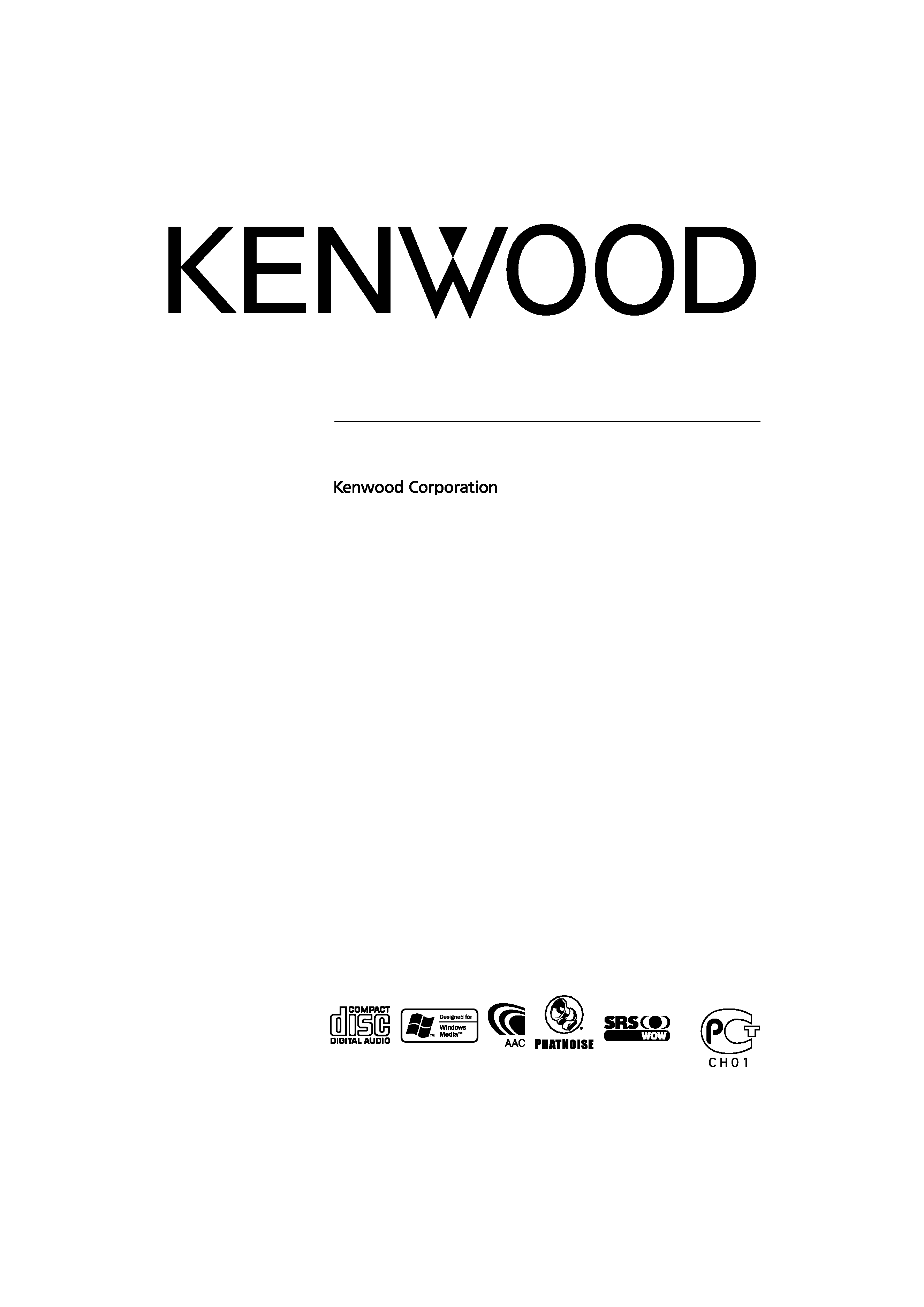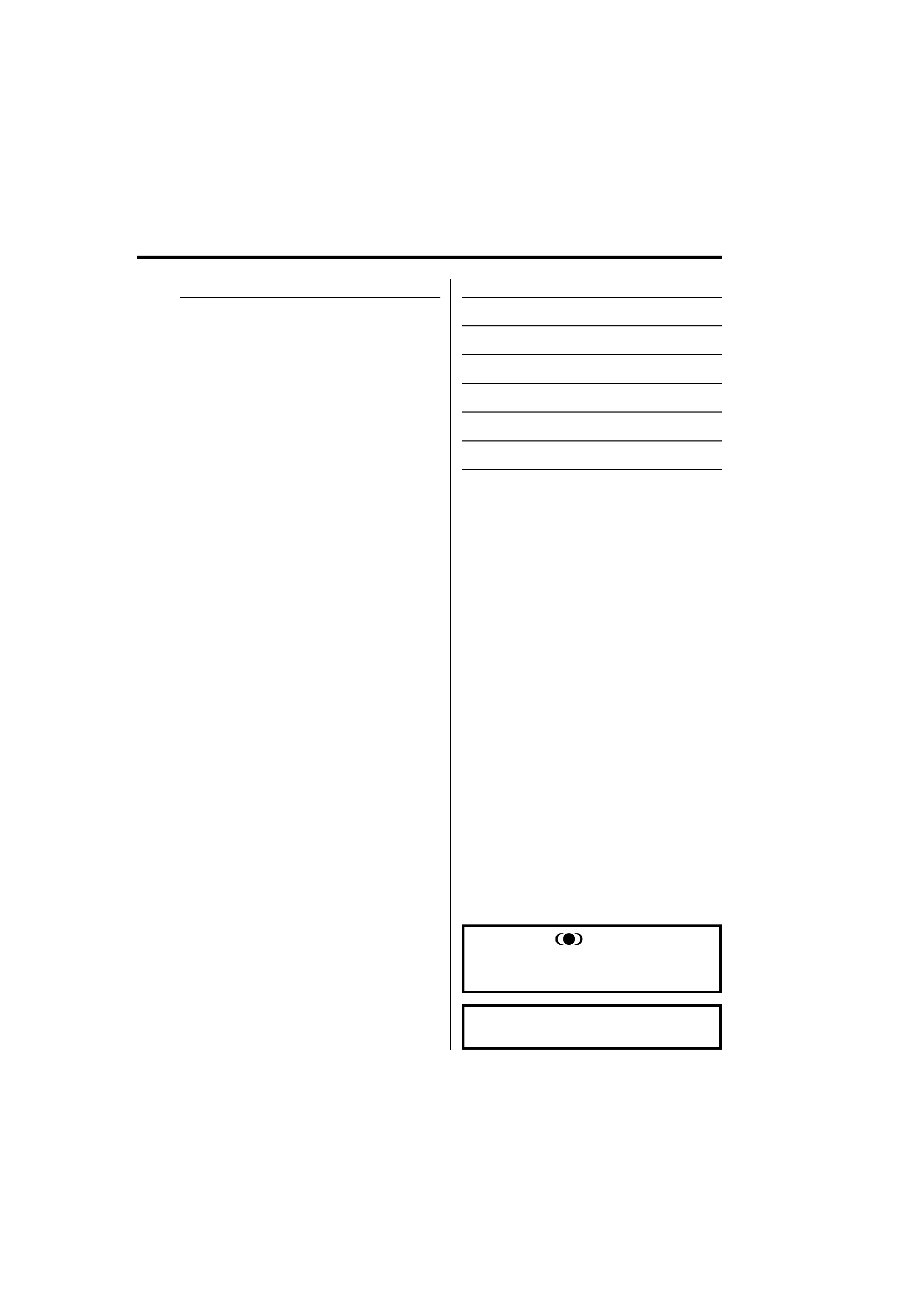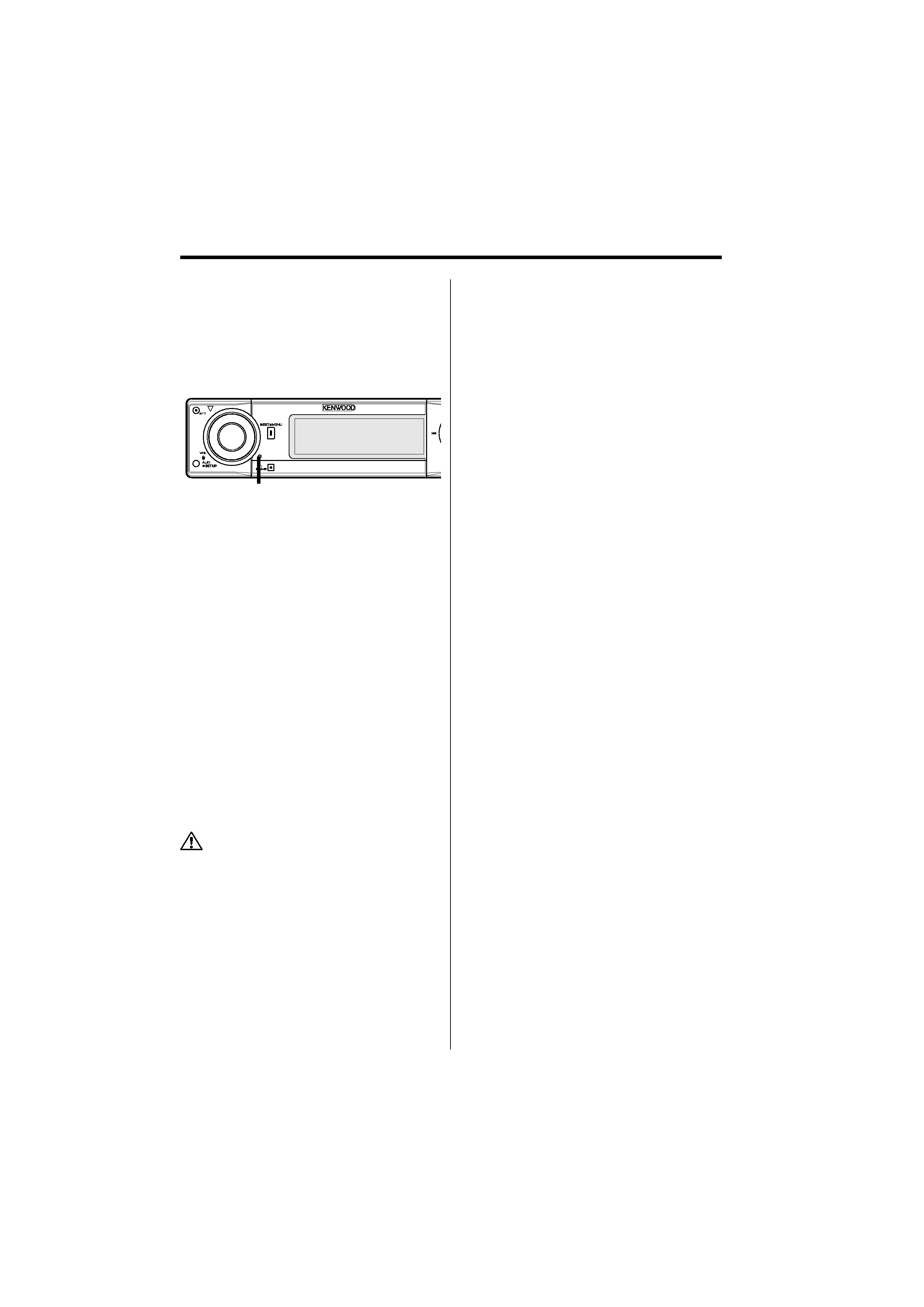
CD-RECEIVER
KDC-PSW9531
INSTRUCTION MANUAL
© B64-3091-00/00 (EW/E2W)

2 | English
Contents
Safety precautions
4
Notes
5
About CDs
7
About AAC, MP3 and WMA
8
Notes on Multi-function System
9
General features
10
Power
Selecting the Source
Volume
Attenuator
Audio Control
Audio Setup
Subwoofer Output
Sound Field Control
Sound Management system
Equalizer Control
WOW Control
Bypass Control
Memory mode
Memory Recall mode
Theft Deterrent Faceplate
Faceplate Angle Adjustment
Display Type Selection
Graphic part/ Spectrum Analyzer Display
Switching
Wallpaper selecting
Text Selection for Display
Text Display Switching
Icon Display Switching
Font Color Select
External Display Switching
TEL Mute
Tuner features
28
Tuning
Direct Access Tuning
Station Preset Memory
Auto Memory Entry
Preset Tuning
RDS features
30
Traffic Information
Radio Text Scroll
PTY (Program Type)
Program Type preset
Changing Language for PTY Function
CD/Audio file/External disc control
features
33
Playing CD & Audio file
Playing External Disc
Fast Forwarding and Reversing
Track/File Search
Disc Search/Folder Search
Direct Track/File Search
Direct Disc Search
Track/File/Disc/Folder Repeat
Scan Play
Random Play
Magazine Random Play
Disc Random Play
Folder Select
Switching the Play mode
Letter Seek
Disc Naming (DNPS)
Text/Title Scroll
DAB tuner control features
39
About DAB Tuner control
Service Preset Memory
Recalling a Preset Service
Program Type (PTY) Function
Program Type preset

English |
3
The "AAC" logo is trademark of Dolby
Laboratories.
WOW, SRS and
symbol are trademarks
of SRS Labs, Inc.
WOW technology is incorporated under
license from SRS Labs, Inc.
Menu system
42
Menu System
Security Code
Touch Sensor Tone
Manual Clock Adjustment
Date Adjustment
Date Mode
Synchronize Clock
DSI (Disabled System Indicator)
Selectable Illumination
Dimmer
Contrast Adjustment
Display-reversing Setting
Built-in Amp Setting
Dual Zone System Setting
B.M.S. (Bass Management System)
B.M.S. Frequency Offset
AMP Control
News Bulletin with Timeout Setting
Local Seek
Tuning Mode
AF (Alternative Frequency)
Restricting RDS Region (Region Restrict
Function)
Auto TP Seek
Monaural Reception
Auxiliary Input Display Setting & Disc Naming
Text Scroll
Built-in Auxiliary input Setting
Power OFF Timer
CD Read Setting
Picture downloading
Voice Index
ACDrive firmware version display
Unique ID display
Demonstration mode Setting
Menu Added for DAB
Basic Operations of remote control 51
Accessories/ Installation Procedure 53
Connecting Wires to Terminals
54
Installation
56
Removing the Unit
57
Troubleshooting Guide
58
Specifications
61

4 | English
Safety precautions
About CD players/disc changers
connected to this unit
KENWOOD disc changers/ CD players released in
1998 or later can be connected to this unit.
Refer to the catalog or consult your Kenwood
dealer for connectable models of disc changers/
CD players.
Note that any KENWOOD disc changers/ CD players
released in 1997 or earlier and disc changers made
by other makers cannot be connected to this unit.
Connecting unsupported disc changers/CD players
to this unit may result in damage.
Set the "O-N" Switch to the "N" position for the
applicable KENWOOD disc changers/ CD players.
The functions you can use and the information
that can be displayed may differ depending on the
models being connected.
· You can damage both your unit and the CD changer if
you connect them incorrectly.
Lens Fogging
When you turn on the car heater in cold weather,
dew or condensation may form on the lens in the
CD player of the unit. Called lens fogging, this
condesnation on the lens may not allow CDs to
play. In such a situation, remove the disc and wait
for the condensation to evaporate. If the unit still
does not operate normally after a while, consult
your Kenwood dealer.
2WARNING
To prevent injury or fire, take the
following precautions:
· To prevent a short circuit, never put or leave any
metallic objects (such as coins or metal tools)
inside the unit.
2CAUTION
To prevent damage to the machine, take
the following precautions:
· Make sure to ground the unit to a negative 12V
DC power supply.
· Do not install the unit in a spot exposed to direct
sunlight or excessive heat or humidity. Also avoid
places with too much dust or the possibility of
water splashing.
· Do not place the faceplate or the faceplate case in
areas exposed to direct sunlight, excessive heat or
humidity. Also avoid places with too much dust or
the possibility of water splashing.
· To prevent deterioration, do not touch the
terminals of the unit or faceplate with your
fingers.
· Do not subject the faceplate to excessive shock,
as it is a piece of precision equipment.
· When replacing a fuse, only use a new fuse with
the prescribed rating. Using a fuse with the wrong
rating may cause your unit to malfunction.
· Do not apply excessive force to the open
faceplate or place objects on it. Doing so will
cause damage or breakdown.
· Do not use your own screws. Use only the screws
provided. If you use the wrong screws, you could
damage the unit.
Attach the panel while you are on the
vehicle
The panel lock arm appears when the panel is
removed. Therefore, the panel must be attached
while the electrical system of the car is operating.
Do Not Load 8 cm (3 in.) CDs in the CD
slot
If you try to load a 8 cm (3 in.) CD with its adapter
into the unit, the adapter might separate from the
CD and damage the unit.

English |
5
Notes
· If you experience problems during installation,
consult your Kenwood dealer.
· If the unit fails to operate properly, press the Reset
button. The unit returns to factory settings when
the Reset button is pressed.
· Press the reset button if the disc auto changer fails
to operate correctly. Normal operation should be
restored.
Reset button
· The characters which can be displayed by ISO
8859-1.
· There are places in this manual where lit
indicators are described; however, the only time
an indicator will light is in the following settings.
When Indicator is selected as mentioned in <Text
Display Switching> (page 22)
· The illustrations of the display and the panel
appearing in this manual are examples used to
explain more clearly how the controls are used.
Therefore, what appears on the display in the
illustrations may differ from what appears on
the display on the actual equipment, and some
of the illustrations on the display may represent
something impossible in actual operation.
Cleaning the Unit
If the faceplate of this unit is stained, wipe it with a
dry soft cloth such as a silicon cloth.
If the faceplate is stained badly, wipe the stain off
with a cloth moistened with neutral cleaner, then
wipe neutral detergent off.
· Applying spray cleaner directly to the unit may affect its
mechanical parts. Wiping the faceplate with a hard cloth
or using a volatile liquid such as thinner or alcohol may
scratch the surface or erases characters.
Cleaning the Faceplate Terminals
If the terminals on the unit or faceplate get dirty,
wipe them with a dry, soft cloth.
Before using this unit for the first time
This unit is initially set on the Demonstration mode.
When using this unit for the first time, cancel the
<Demonstration mode Setting> (page 49).
About ODD (Offset Dual Differential) D/A
System
You can enjoy high quality sound play when
playing music CDs with the ODD D/A System
enabled. ODD D/A System has two built-in D/A
converters and each D/A converter processes D/A
conversion seperately on the front left and right
channel. Since digital processing is performed for
each channel seperately, noise occurance from
interference between channels is completely
suppressed and the seperation of audio sound
output from two channels is distinguished and
clear. Also, the ODD/A System produces the data
by which the sound data is offset on the minus side
and converts the two signals (original and offset
data) to the analog signal, which has less noise and
distortion, by the synthetic process.
However, ODD D/A System will be disabled if the
following settings are selected.
- When "2ZONE" of <Audio Setup> (page 11) is
"ON".
- When <Bypass Control> (page 16) is "Bypass".
